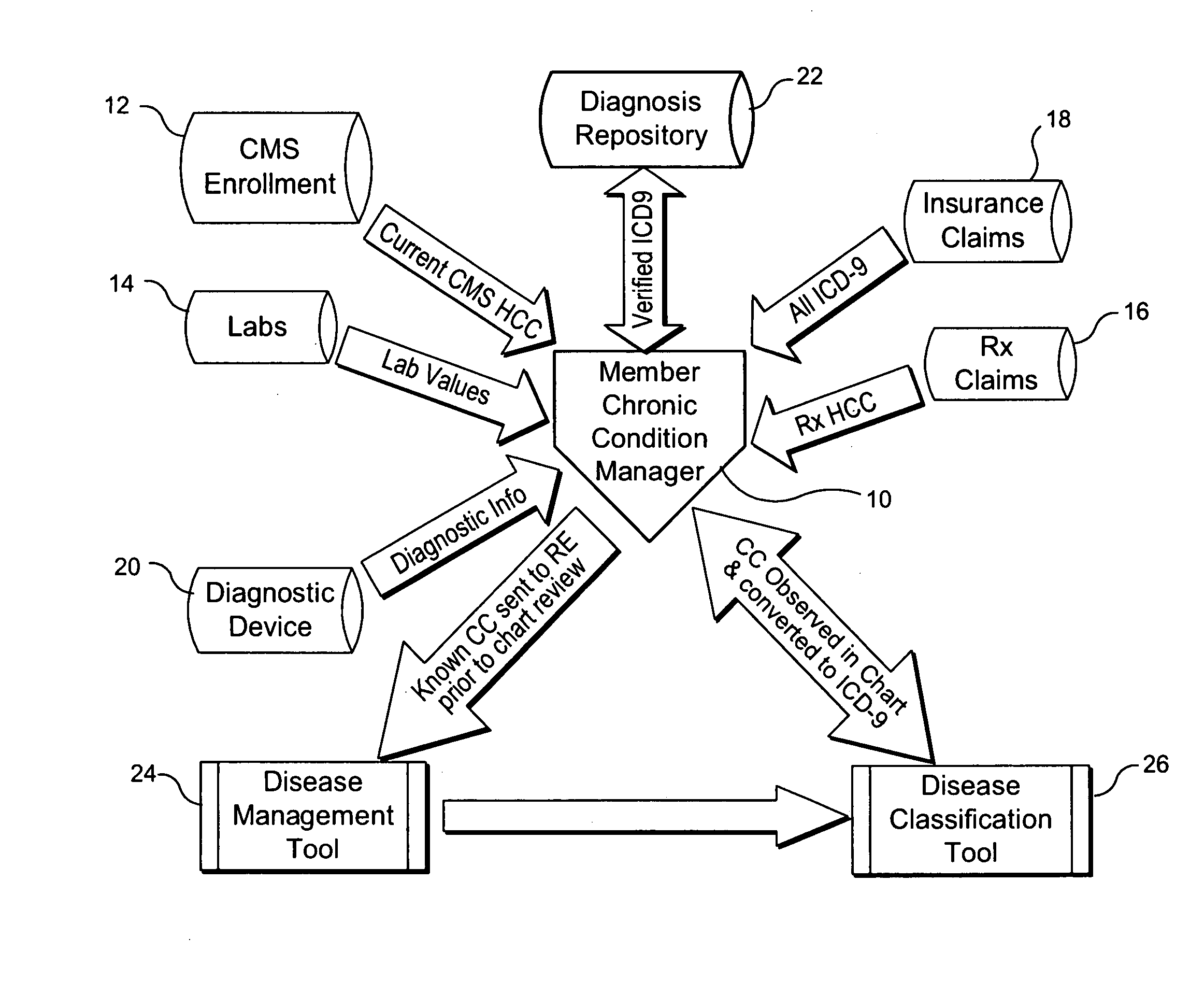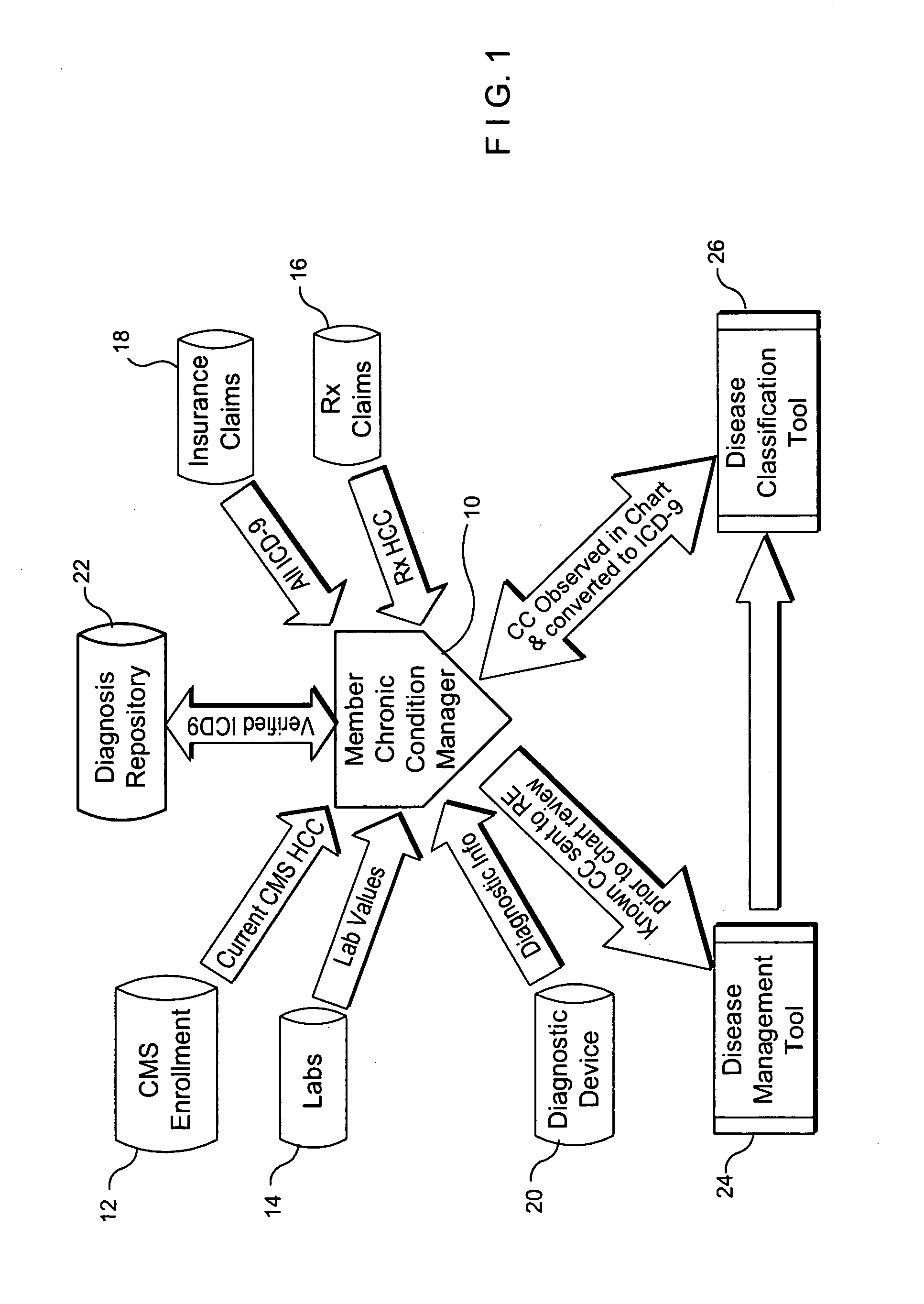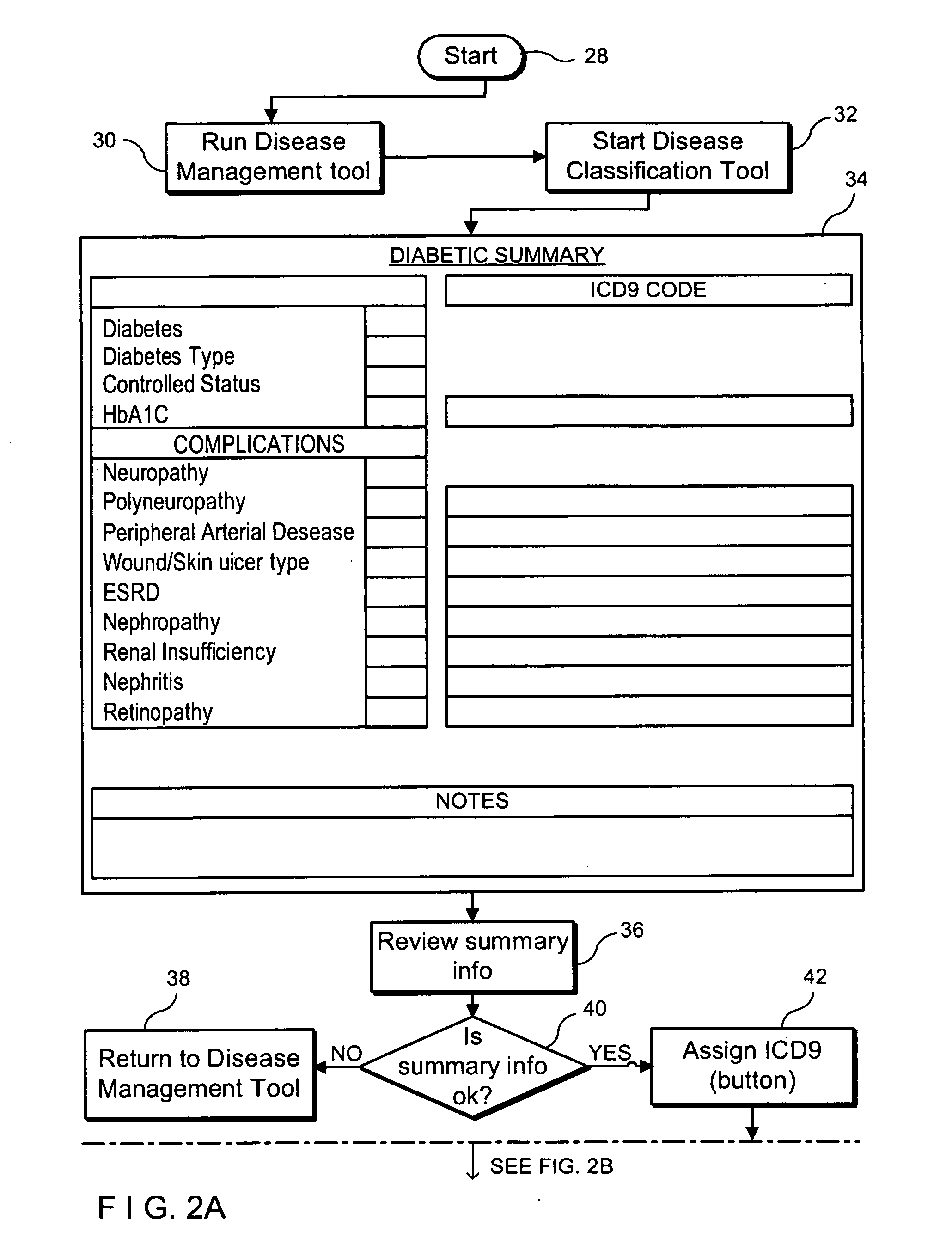System and method for determining and verifying disease classification codes
a disease classification and system technology, applied in the field of system and method for determining and verifying disease classification codes, can solve the problems of increasing the total expenditure of the medicare program, severe lack of physician coding specificity, and inability to effectively coding a physician
- Summary
- Abstract
- Description
- Claims
- Application Information
AI Technical Summary
Problems solved by technology
Method used
Image
Examples
Embodiment Construction
[0021]The preferred embodiment of the system and method of the present invention will be described herein in connection with the establishment of a confirmed disease classification code in connection with a population of patients having diabetes. However, it will be readily noted that the invention is equally applicable to other diseases such as coronary artery disease (CAD), heart failure (HF), cerebrovascular disease (CVD), etc. Moreover, while the system and method of the present invention is described as ascertaining a confirmed disease classification code for one particular patient, it should be understood that numerous patients can be coded simultaneously. Moreover, while the following description of the preferred embodiment will be described with respect to establishing ICD-9 codes, it should be evident that any disease classification coding system can be utilized—whether internationally accepted or internally established.
[0022]Referring to FIG. 1, a processing unit 10 (descr...
PUM
 Login to View More
Login to View More Abstract
Description
Claims
Application Information
 Login to View More
Login to View More - R&D
- Intellectual Property
- Life Sciences
- Materials
- Tech Scout
- Unparalleled Data Quality
- Higher Quality Content
- 60% Fewer Hallucinations
Browse by: Latest US Patents, China's latest patents, Technical Efficacy Thesaurus, Application Domain, Technology Topic, Popular Technical Reports.
© 2025 PatSnap. All rights reserved.Legal|Privacy policy|Modern Slavery Act Transparency Statement|Sitemap|About US| Contact US: help@patsnap.com



